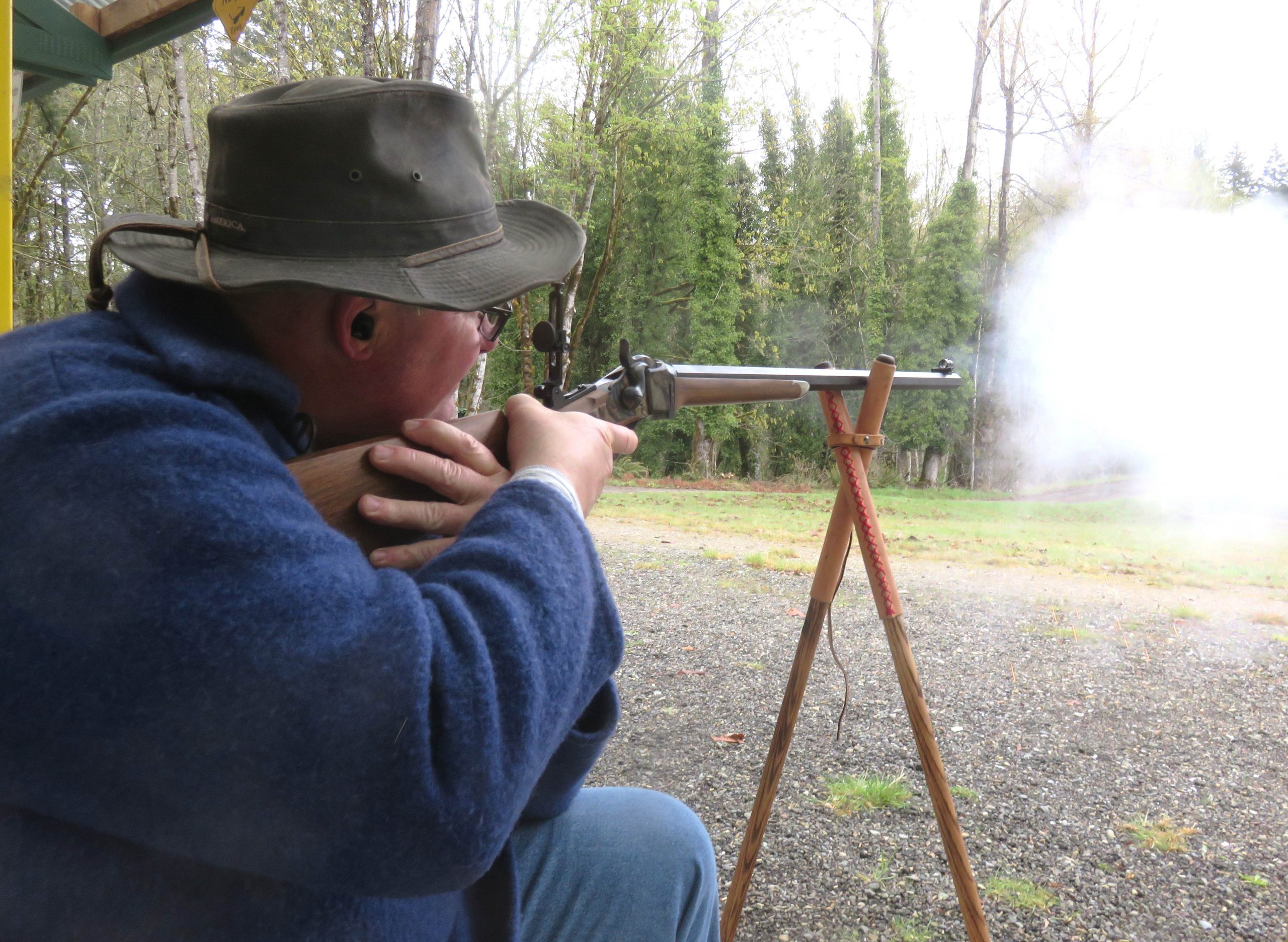
By Mike Nesbitt | Contributing Editor
You’ve certainly had the chance to read my comments about the .50-70 before because I often mention it as one of my favorite cartridges.
No, I haven’t done it all with a .50-70 but I have done quite a bit with this old soldier. And lately something new has been tried, with very good results.
Our club’s Paper Patch Match had some revealing things about it, from excellent performance, such as with Allen Cunniff’s scores with his Sharps in .40-65, to some disappointing targets shot with whatever the shooter was using. One of those disappointed was my friend Tom Witt and it is with his targets, especially at 200 yards, where this story really begins.
To be straight-forward about it, Tom’s 200-yard target was hit only once and that shot scored a 6. His rifle, or his ammunition, or even Tom himself was simply shooting wildly. But that wildness was not apparent on his 100-yard target, so we can suggest that his problems in hitting at 200 yards was not just him. With that we’ll look more closely at his rifle and his ammo.
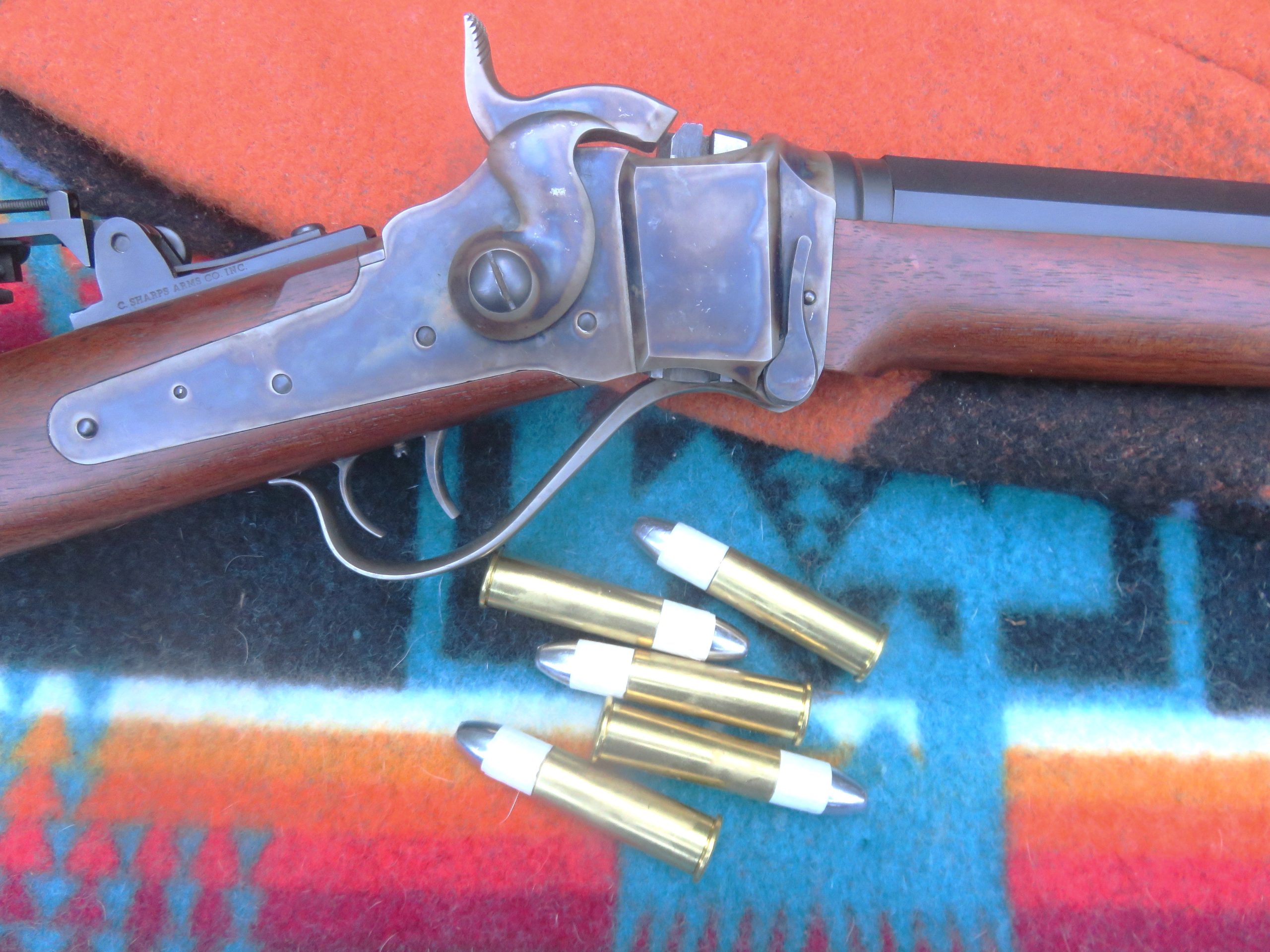
His rifle shouldn’t hold any problems. After all, that fine gun was made by C. Sharps Arms, and it is a ’74 Sharps “Hartford Model” in .50-70 caliber. I remember very well when he got that rifle, in fact, he ordered and bought it on my recommendation. It’s a rather standard gun, with a #1 Heavy octagon barrel, 30 inches long, with a mid-range Vernier sight on the tang and a Globe front sight near the muzzle on the barrel. Mixing those features with the fact that Tom has done very well with this rifle when using ammunition with grease-groove bullets speaks highly about the rifle which means he needed a close look at his paper patched loads.
Tom will admit that he is just getting started with rolling and shooting paper patched bullets. And when he made the comment that he needed to find out where to start in making more accurate loads, I spoke up, volunteering to work on this problem with him. Some people would call that interfering more than helping, but Tom accepted my invitation and we made some quick plans on doing more shooting.
That sent me home to work up some good paper patched loads for Tom’s rifle. One part about his rifle that needed consideration was the barrel. It’s a very good barrel, made by Green Mountain Rifle Barrel Company, but it has a 1:24-inch rate of twist. Such a “fast” twist in a .50-caliber rifle barrel makes the gun more at home with very heavy bullets. The rate of twist on the old .50-caliber Sharps rifles was often 1 turn in 30 inches and for my own .50-70 rifles, such as my own ’74 Hartford by C. Sharps Arms, I favor a 1;32-inch rate of twist.
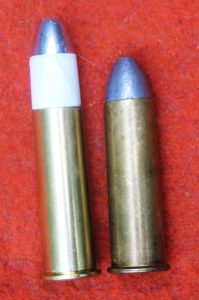
The first thing I did was to set my adjustable KAL bullet mold (KAL Tool & Die) for the .50-caliber Sharps style paper patched bullets to 505 grains, using a soft 30-to-1 alloy of lead and tin. These tapered bullets drop from the mold with a .498” diameter for the straight section which ends at the bullet’s base. It had been set for a 473-grain bullet, copying what had been the standard bullet for the Sharps .50-90. The 505-grain bullets are just a little longer, because the difference in weight is just under 30 grains, but the length of the bullet is more “in line” with the rate of twist in the Green Mountain barrel. Little things can make big differences.
There are no “settings” for the adjustment on the KAL molds, so making an adjustment is somewhat like guesswork. You estimate the adjustment needed, cast a couple of bullets, then weigh the cooled bullets to see how close the adjustment might be. In this case, I was actually looking for a 500-grain bullet and got the 505-grain slug on the first try. That was certainly close enough.
But some of the 473-grain bullets were certainly saved because if I want to adjust the mold back to cast more of the 473 grainers, the easy way to do that is to put one of the saved bullets back in the mold and then screw down the adjustment until it stops. Then the 473-grain projectiles would be made again. Of course, a bullet should be weighed to check the setting.
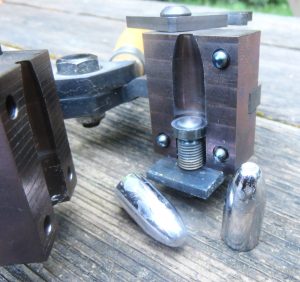
At this time, I don’t expect to go back to the 473-grain bullets, at least not for the .50-70 loads. What followed was simply too good to not be continued.
After casting the bullets, those slugs were patched with two wraps of 9-pound paper which is available from Buffalo Arms Co. The patches were cut with the aid of a metal patch template and then applied wet to the bullets. Then the patched bullets were stood on their bases until dry.
Cases for the loads, using Starline .50-70 brass, which right now is hard to find, so we must encourage Starline to make another run of the .50-70 and .50-90 cases. All of my cases were full-length resized. I often load .50-70 ammo without resizing the brass but that’s done for grease-groove bullets. The paper patched bullets are smaller in diameter and for the best bullet-to-case fit, the brass needs to be sized.
Twenty cartridges would be prepared and after priming the cases, it was time to select a brand and granulation of powder for these trial loads. My selection was for Swiss 2Fg powder and that was picked because it is somewhat faster burning than the larger granulations of either Swiss 1 ½ Fg or, of course, the Swiss 1Fg. The faster powder was selected because with it the internal pressures climb faster, which would help the bullet obturate as it starts its trip down the bore.
Obturation is where, in simple terms, the base of the bullet starts moving before the front does, which makes the bullet get “fatter,” filling the rifling grooves in the barrel. This is sometimes referred to as “bumping-up” and it is rather necessary for good shooting with paper patched bullets. Actually, all soft lead bullets obturate to a certain degree.
I tried a powder charge of 70 grains, which is probably no real surprise for use in the .50-70. Swiss powder has a greater density than other powders, such as Old Eynsford, and getting the 70 grains into the case is no problem at all, even without a drop tube. The case becomes almost full but there is still plenty of room for placing an over-powder wad in position. The wads being used were from John Walters, the “tin wad man” and they were of the .060” thickness. Walters’ Wads are available from many outlets but all directly from John Walters. (He has no website but his phone number, in Moore, Oklahoma, is 405-799-0376 and his email address is thetinwadman@cox.net.)
Over the wad goes a disc of bullet lube, simply “cake cut” with the cartridge being loaded. That “grease cookie” needs to be at least 1/8-inch thick. The lube, in these loads, has a double duty. First, it softens the fouling in the barrel which is necessary for repeated shots with paper patched bullets without wiping the bore each time. But for the shooting done with this load so far, that is actually a secondary feature. The real reason lube was included in these loads was because the bullets are cup-based and that lube, while the bullet is being pushed toward the rifle’s muzzle when the gun is fired, becomes liquid and fills that cup base with “hydraulic fluid” which does its part to expand the base of the bullet into the rifling grooves.
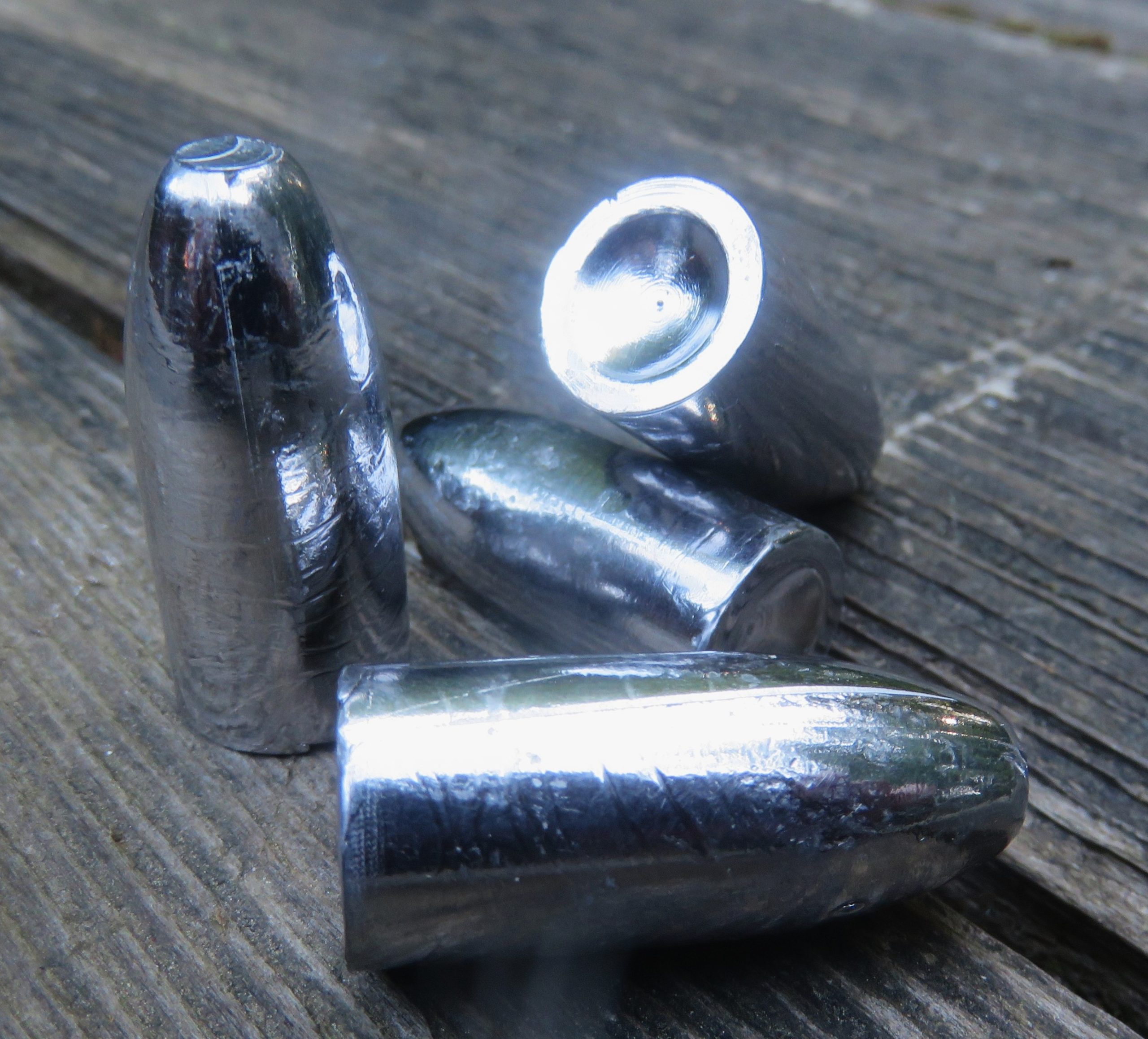
And over the lube goes the bullet. No wad is used between the lube and the bullet as would be used with a flat-based bullet. The patched bullets are simply inserted into the mouth of the case and then pushed back to the lube with fingertips, going into the case only 1/8-inch.
Following that, the loaded cases are run through a taper crimp die, but not all of the way, to straighten the “bell” at the mouth of the case which was left there by the expander die. That also tightens the grip of the case on the base of the bullets and those bullets now protrude from the case nearly a full inch with just an eighth of an inch inside the case. This gives the cartridge an overall length of 2 ¾ inches. We might say that these cartridges, with their extended paper patched bullets, have “buffalo loads” written all over them.
Before going to the range, these new loads were tried in the rifle’s chamber. They all chambered with ease. The tapered bullets extend into the rifling and that’s just the way we want it for shooting paper patched bullets.
Tom Witt met me at the range to join in with the shooting. Twenty of the loads described were ready for us to try and we decided that I’d shoot first with Tom spotting my shots. The targets were posted at 100 yards and the Garmin chronograph was ready and in position. Just after the roar of the first shot, the chronograph told us the velocity was 1,227 feet per second. That will sound slow to shooters using modern guns, especially rifles, but for a black powder cartridge rifle, that is doin’ pretty good.
That shot hit low in the black at 6 o’clock. Following shots gave me a rather good group using that first shot as a center. Then it was Tom’s turn to try the loads in his rifle. His group was actually better than mine and more properly centered on the target too. Tom’s rifle’s barrel showed its favor for those 505-grain bullets very quickly. In between a couple of the shots, I asked him if he could “feel” the difference between these loads and the loads he had been using. “Oh, yes!” he replied, “These make this rifle roar!”

It’s true that we could hear the difference between these new loads and the older loads Tom tried on another target. Those “older” loads, with the lighter bullets and those lighter charges using GOEX powder, were simply some leftovers from our paper patch match and, once again, those loads would not consistently keep bullets on the target. I like GOEX Fg-series powders in muzzleloaders but that powder doesn’t have the “bounce to the ounce” like Swiss or Olde Eynsford for use in black powder cartridges.
We parted with the pledge that we’d do it again. But before I saw Tom again, I tried the same bullets with an even heavier load. This time 72 grains of Swiss 1 ½ Fg powder was used. That much powder can still be loaded in the .50-70 case without a drop tube but having a drop tube will certainly help. The powder was compressed to the same depth under a Walters’ Wad and then the lube and bullet were added. Those 72-grain loads averaged 1,256 feet per second and they sounded even healthier than the 70-grain loads. Sometimes little things really make the difference. And the group was pleasing but not as good as hoped.
So, another try will be made and I’m going to load the paper patched bullets over 71 grains of the Swiss 1 ½ Fg powder. Those, I’m hoping, will have a velocity just slightly slower than the 72-grain loading but with a tighter group than those faster loads. Then, if the performance is satisfactory, those loads will be tried at 200 yards and further. Let me conclude this part of the story simply by saying, a report shall follow.



